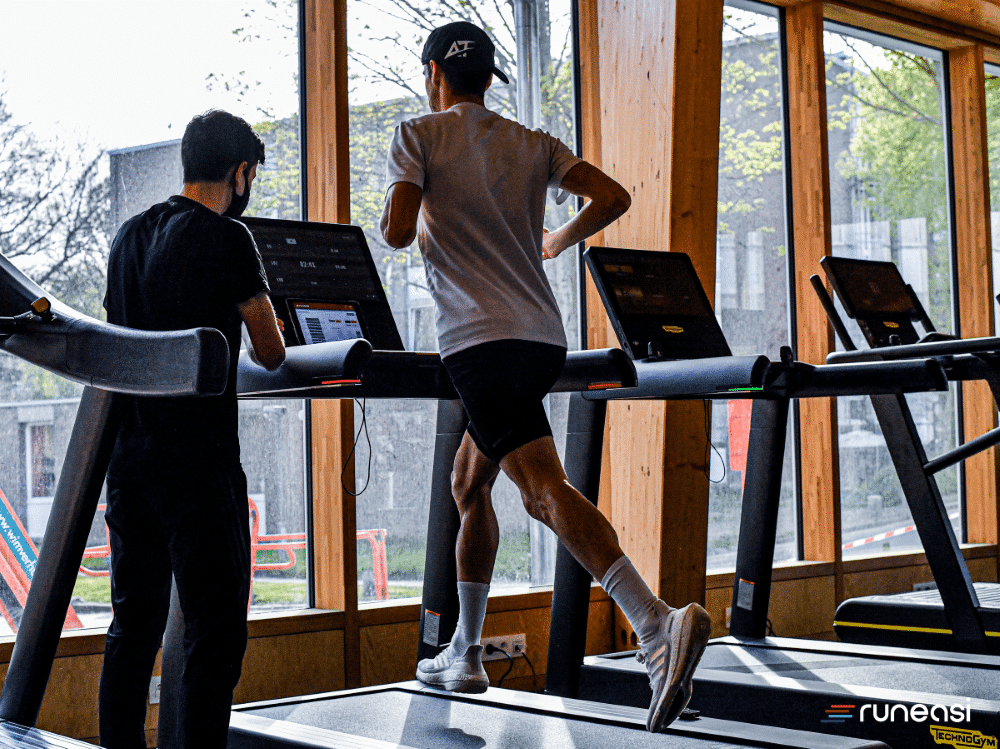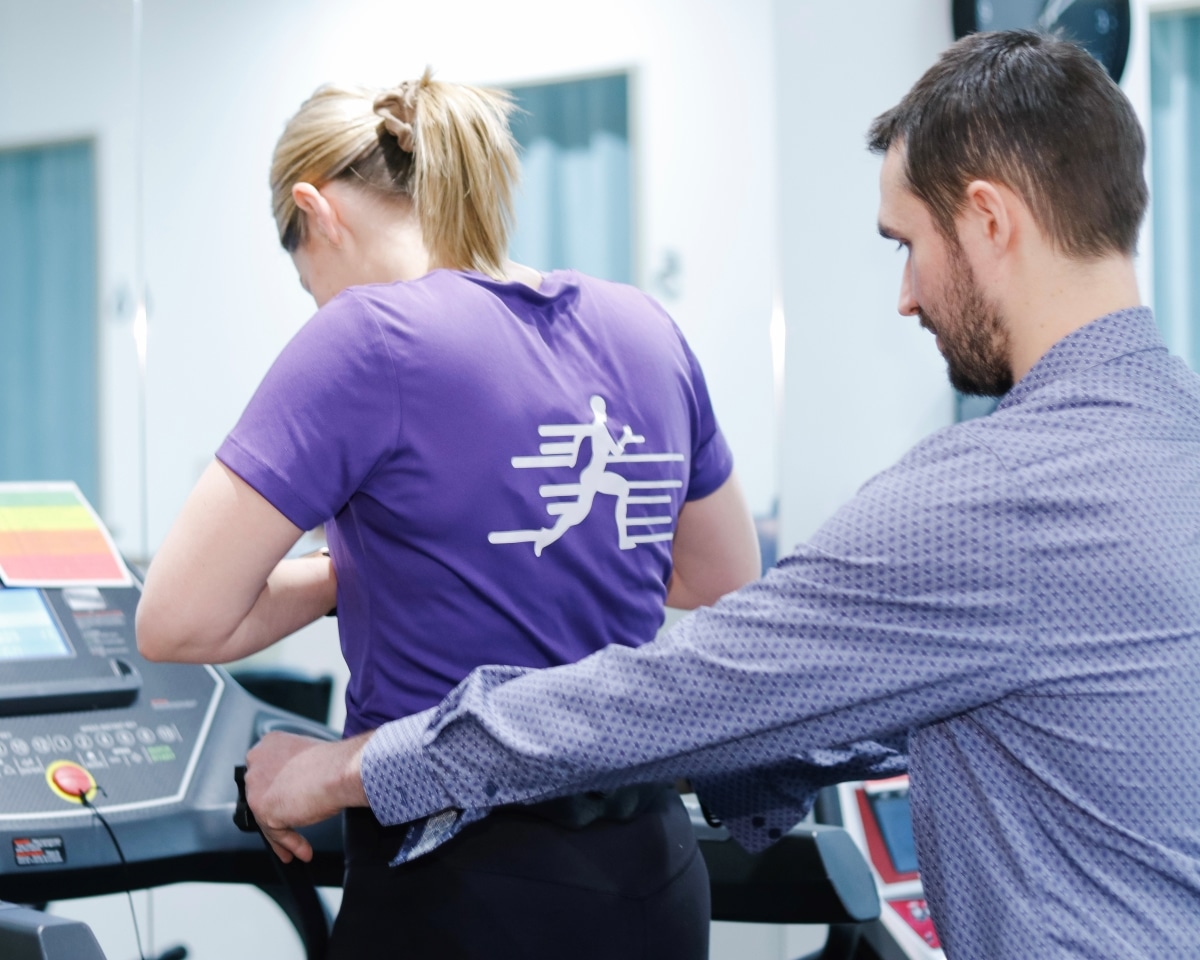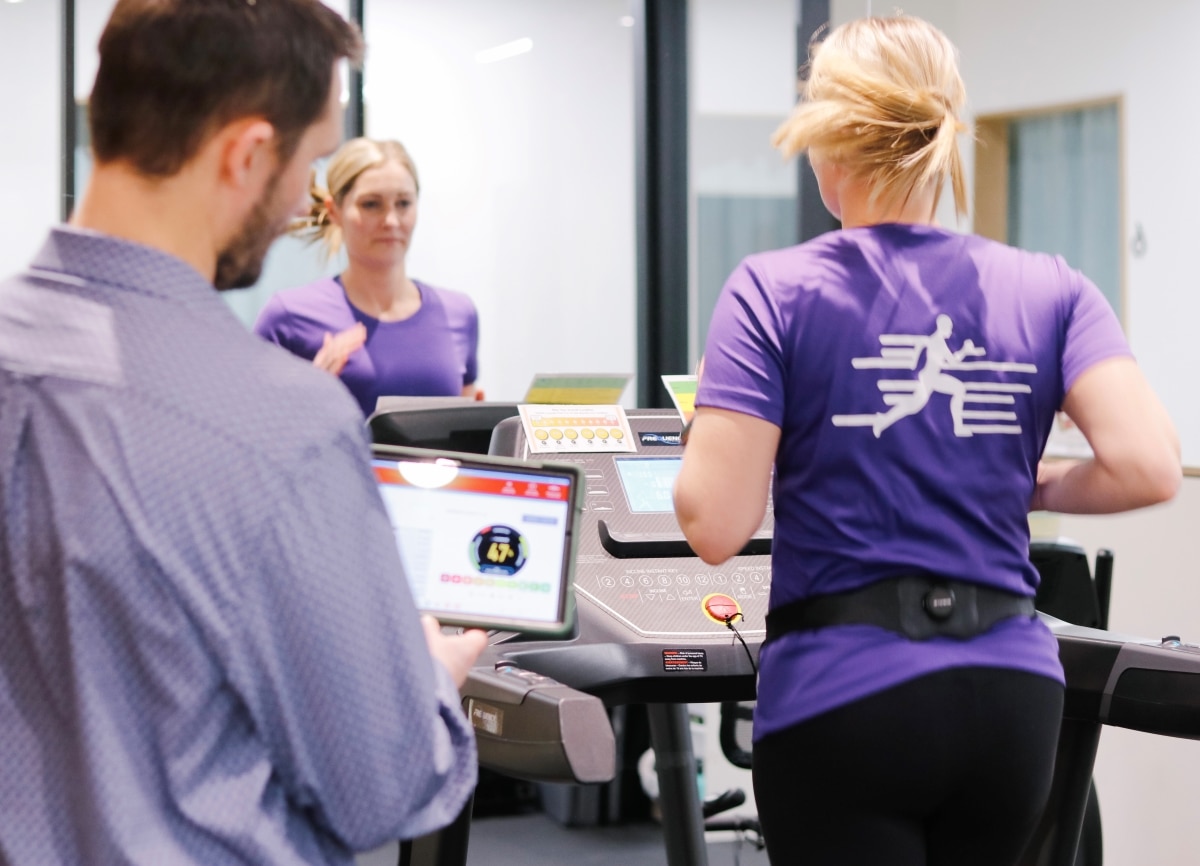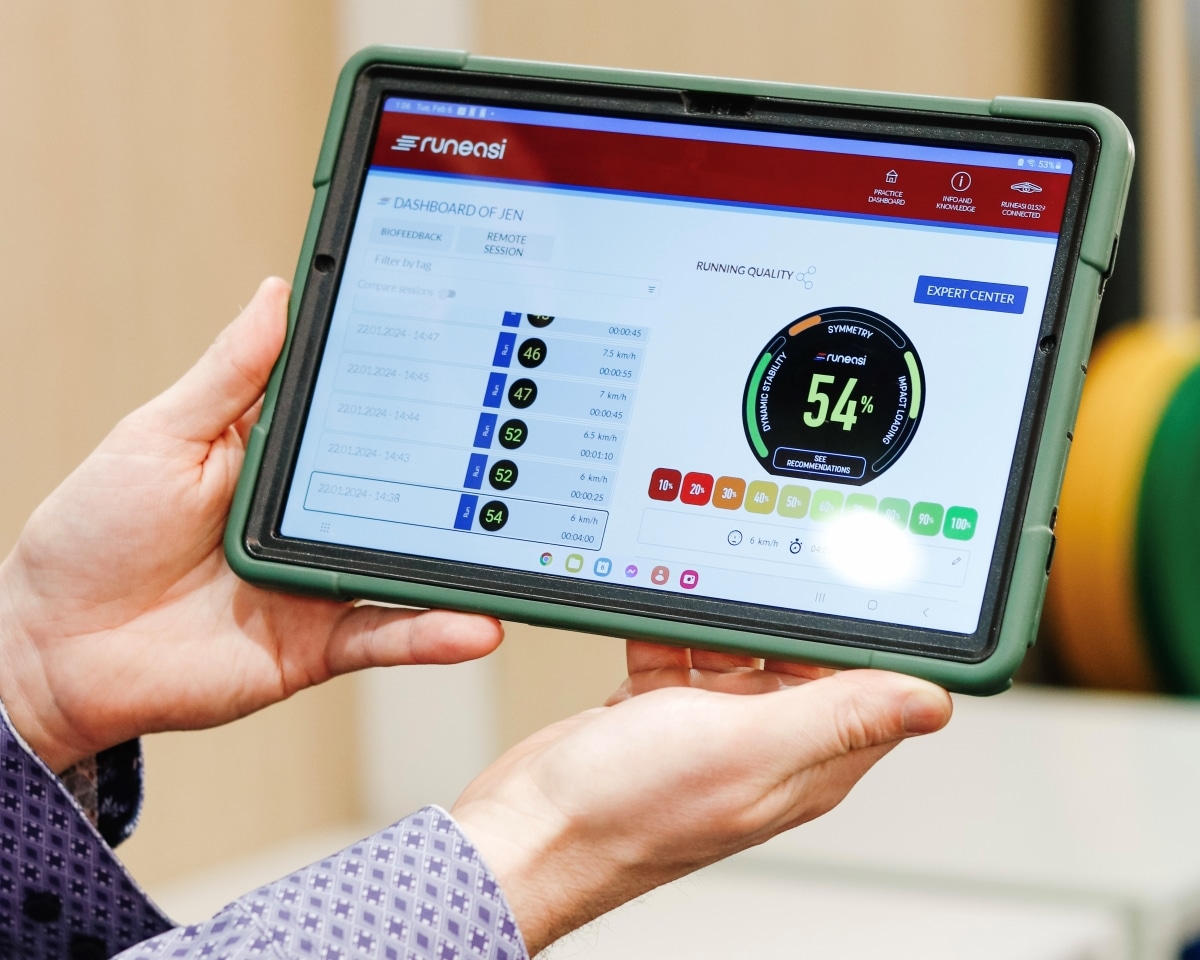
AI Powered Gait Assessment
We use an AI powered motion sensor to measure your running! The sensor was developed after 10-years of research, and using AI to refine the sensor algorithm. We can measure ground impact, shock absorption, stability, and symmetry.
Stop guessing. Start assessing.
The technology we use is valid and reliable, and helps us measure components of your running that we couldn’t otherwise.
Actionable Insights
Our tech captures relevant and actionable data that we can use to help you become a more efficient and resilient runner. We provide you with individualized feedback, exercises, and training recommendations to help you run better.
Integrated Assessment
We perform a standard assessment, watch you run, and measure your running. Then we piece it all together!




Performance
Our gait analysis can provide insights into how you become a more economical runner.
Injury Prevention
Gait analysis data can be used to help prevent injuries, and provide insights into why certain injuries are occurring.
Benchmarking
After we collect the initial data, we can see how your gait changes over time and with interventions.
Frequently Asked Questions
+
- Standard physiotherapy assessment: We assess your flexibility, strength, and muscle control before we look at your running. This assessment can help us explain why you are running the way you are.
- Objective gait analysis: Using the motion sensor, we can capture data such as your ground impact, side-to-side movement, symmetry, shock absorption, cadence, and ground contact time. These metrics tell us about how you are running, and where you can make improvements. Our eyes can’t tell you some of the data we capture from the motion sensor. We usually test you at multiple speeds. In many cases, gait quality begins to deteriorate as speed increases.
- Visual gait analysis: We still use our eyes to see how you are running. The motion sensor actually makes it easier for us to watch you run. For example, instead of counting how many footsteps you’re taking per minute, we can focus on other components of your running. The sensor can also help us to objectify what we are seeing.
- Intervention: We provide exercises and/or training recommendations to help you run better. Changing gait can be challenging and some components are easier to change than others. We make sure to provide you with the most actionable recommendations to improve your running.
- Reports: You will receive your gait analysis report via email, after the appointment!
+
The gait sensor uses accelerometers to measure your movement in 3 dimensions. The data from the accelerometers has been validated and proven to be reliable, which means it measures what it says it is measuring, and does so consistently.
- Over 10-years, the sensor has been correlated with 3D gait analysis. 3D gait analysis technology is used in gait laboratories for research purposes.
- Correlated with force-plate data: The sensor tells you how hard you are hitting the ground, without using force plates. This is one of its most useful features.
- Easy to setup: The sensor is easy to use! It takes very little time to setup, and does not require additional equipment. The sensor is attached to a special neoprene waistbelt that fits securely to your pelvis. The minimal equipment requirements, and easy setup/takedown, makes the gait assessments less costly for everyone.
- Avoids data overload: The gait sensor focuses on important metrics. We try to avoid data overload and focus on information that is actionable and important.
+
Here are our recommendations:
- Be recovered: Don’t do any strenuous running or other activities (ie. weightlifting or hiking) at least 48-hours before the gait assessment.
- By well-hydrated and nourished: Don’t start a new diet before the race. Make sure you are eating a well balanced diet. Again, we just want to make sure you are feeling good for the run.
- Clothing and shoes: Bring indoor running gear, and bring the shoes you would normally wear (unless they have spikes built into them that may damage the treadmill). You will be running on a treadmill. If you wear multiple pairs of shoes, you can bring the other shoes too.
+
Don’t be fatigued. Here is why:
- We want to see how you are running when you are feeling good, and before the onset of any aches or pains (if possible).
- Once you start hurting, your gait will change, and it may not represent what it looked like prior to the pain starting.
- We need to establish a baseline: If this is the first time you’re being assessed, we need to start somewhere. Having your baseline data while you’re fresh is better!
- It is important to test you at multiple speeds. For elite level runners, gait quality is usually well maintained at all running speeds. For everyone else, speed tends to result in a reduction of running quality. It is important to pick that up, because that could be where injuries are starting from. If you are tired, the data at higher speeds may change.
+
+
Your Gait Analyst

Michael Kirby
Education
Master of Science in Physical Therapy from the University of Alberta (2016/17)
Bachelor of Kinesiology (BKin) from the University of Calgary (with Distinction)
Post-Graduate Training
The Running Clinic Certified+ Professional
UESCA Certified Ultrarunning Coach
Loading The Injured Runner (Certificate)
Certificate in Cognitive Behavioural Therapy (Level 1)
Licensed to Order Diagnostic Imaging
Licensed to Perform Dry Needling / IMS
Licensed to Perform Spinal Manipulations



